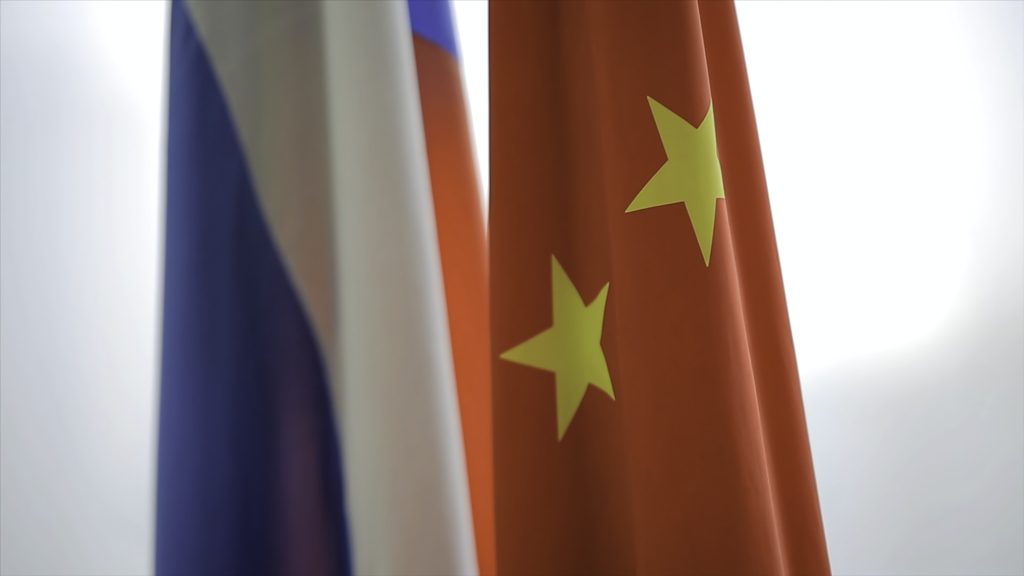China has used its soft power with its close neighbour and ally Russia to increase the use of the yuan to make transactions for trade. It is buying Russian commodities like oil, coal, and various metals in its currency yuan, ditching the US Dollar. This surge has been visible since the aftermath of the Russia-Ukraine conflict.
China is optimally utilising the opportunity to circulate more yuan into its international trades. It is doing so to challenge the dominance of the dollar. It has paid approximately $88 billion for its commodities trade with the erstwhile Soviet Union.
According to the Society for Worldwide Interbank Financial Telecommunication (SWIFT), Yuan’s share in global payment currency was a meager 2.5 percent, while its rival, the US Dollar, commands a staggering 39.4 percent, and the Euro enjoys 35.8 percent.
This March, renminbi, the other name for yuan, became the most widely used currency for overseas transactions in China. This position was previously held by the dollar.
China had begun to internationalise the yuan decades ago but was only successful in using it for making payments of big Chinese commodities consignment. It was well aligned with Beijing’s aim to counter the dominance of the dollar, as most of the global trade of commodities like oil, gas, copper, and coal is made in dollar terms.
Last year became the catalyst which China wanted to fulfil its ambition of using the yuan for overseas trade. After the Russian invasion of Ukraine, Moscow was bombarded by economic sanctions by the Western nations. This prevented the West from buying Russian commodities, primarily crude. China came forward and capitalised on this opportunity by grasping the discounted crude oil, aluminium, coal, and several other commodities. This increased its Russian commodities imports by 52 percent in value terms.
This was a breather for China as it saved billions of dollars for the crumpled economy caused by the covid pandemic and real estate crisis. These purchases are expected to increase as the country opens up, and the economy recovers.
According to China’s customs reports, China imported Russian crude and fuel oil worth $60.3 billion last year. Most of the Russian oil imports, majorly crude and some amounts of fuel oil, are paid for in yuan, five trading executives with direct knowledge of the matter, who wished to remain anonymous, said to news outlets.
Yuan Takeover
Russia invaded Ukraine on 24 February, and this led the Western powers to eliminate Russia from the SWIFT network. This barred seven Russian banks from receiving or making payments worldwide. The Kremlin states this not as a sanction but as a military operation.
Back then, some Chinese purchasers faced difficulty in obtaining trade financing in dollars due to the banning of businesses. This made them adopt a telegraphic transfer, which is similar to cash advance payment. This was a relief for the independent refiners who were grappling with tight financing.
Last month, Argentina came forward and agreed to make payments for its Chinese imports in Yuan to give relief to its dollar reserves. In March, France’s TotalEnergies sent their first LNG shipment to China, settled in yuan. This shows that the yuan has started getting traction globally and has started making strides toward challenging the dollar hegemony.
The globalisation of the yuan significantly increased when the Western nations led by the United States imposed an import ban and increased the sanctions lists. This was further escalated on 5 December when they decided to impose the Western price cap on Russian crude shipments.
A trading executive said that all of the seaborne Russian oil cargoes bound for China are paid for in renminbi (yuan) since the price cap. This has sidelined the remaining small number of banks handling the US Dollar. This gets extremely complicated for banks transacting in the dollar under the price cap regime, calling for greater compliance work for the banks.
Russian Stance
Alexander Novak, Russian Deputy Prime Minister, said last month that they would be open to receiving energy export payments in rubles or yuan as an alternative to transacting in dollars and euros.
Vladimir Putin, the Russian President, has commented that two-thirds of their trade with China is settled in rubles or yuan.
Russia’s imports in 2022 have seen a surge of yuan settlements from 4 percent to 23 percent, as per the Russian central bank.
In 2022, China’s trade deficit with Russia expanded to $38 billion due to the massive commodity imports. This got contracted in the first four months of 2023.
